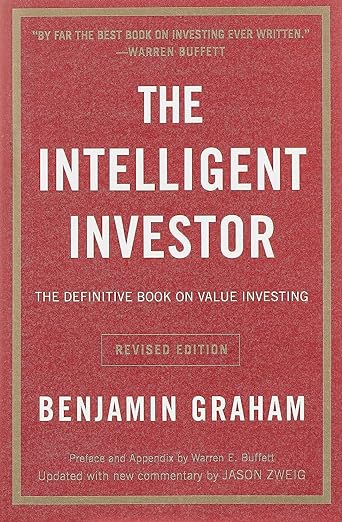Benjamin Graham’s The Intellingent Investor Chapter 20 (Margin of Safety As The Central Concept Of Investment)
In a section of his letter to Berkshire Hathaway shareholders on February 28, 2014 for FY2013, Warren Buffett shared “Some Thoughts About Investing” (Post: Investment is most intelligent when it is most businesslike) .
He also shared more about Benjamin Graham, his teacher and friend, and about Benjamin Graham’s book, The Intelligent Investor .
“Ben’s ideas were explained logically in elegant, easy-to-understand prose (without Greek letters or complicated formulas). For me, the key points were laid out in what later editions labeled Chapters 8 and 20. (The original 1949 edition numbered its chapters differently.) These points guide my investing decisions today.”

So what is Chapter 20 in the later editions of The Intelligent Investor all about?
As Chapter 20’s title, “Margin of Safety” as the Central Concept of Investment, suggests, “margin of safety” is the motto governing Benjamin Graham’s investment policy. It is the thread that runs through all the investment policy discussion in preceding chapters.
The chapter started off with the margin-of-safety concept as applied to “fixed value investments”.
“All experienced investors recognize that the margin-of-safety concept is essential to the choice of sound bonds and preferred stocks. For example, a railroad should have earned its total fixed asset charges better than five times (before income tax), taking a period of years, for its bonds to qualify as investment-grade issues. This past ability to earn in excess of interest requirements constitutes the margin of safety that is counted on to protect the investor against loss or discomfiture in the event of some future decline in net income. (The margin above charges may be stated in other ways – for example, in the percentage by which revenues or profits may decline before the balance after interest disappears – but the underlying idea remains the same.)
The margin-of-safety concept as applied to “fixed value investments” can be carried over to the field of common stocks, says Chapter 20, but with some necessary modifications.
“There are instances where a common stock may be considered sound because it enjoys a margin of safety as large as that of a good bond. This will occur, for example, when a company has outstanding only common stock that under depressed conditions is selling for less than the amount of bonds that could safely be issued against its property and earning power. That was the position of a host of strongly financed industrial companies at the low price levels of 1932-33. In such instances, the investor can obtain the margin of safety associated with a bond, plus all the chances of larger income and principal appreciation inherent in a common stock. (The only thing he lacks is the legal power to insist on dividend payments “or else – but this is a small drawback as compared with his advantages.”
Elsewhere in Chapter 20, it says “the risk of paying too high a price for good-quality stocks – while a real one – is not the chief hazard confronting the average buyer of securities”. “Observation over many years has taught us that the chief losses to investors come from the purchase of low-quality securities at times of favorable business conditions. The purchasers view the current good earnings as equivalent to “earning power” and assume that prosperity is synonymous with safety.”
As for growth stocks, the danger lies in the market’s “tendency to set prices that will not be adequately protected by a conservative projection of future earnings”.
The margin of safety is much more evident in the field of undervalued or bargain securities. By definition, it means there is a favorable difference between price on the one hand and indicated or appraised value on the other. “That difference is the margin of safety”.
The gem of Chapter 20 comes in this famous Benjamin Graham quote: “Investment is most intelligent when it is most businesslike.”
“It is amazing to see how many capable businessmen try to operate in Wall Street with complete disregard of all the sound principles through which they gained success in their own undertakings.”
Related posts: (1) The Intelligent Investor Chapter 8
(2) Warren Buffett on intelligent investing
Recommended reading:
